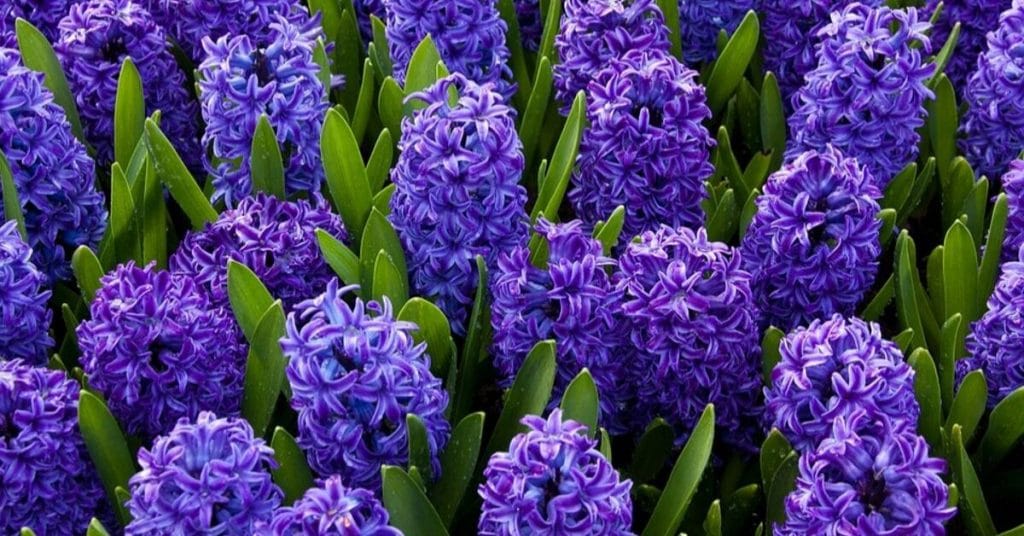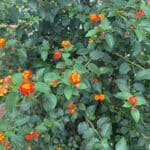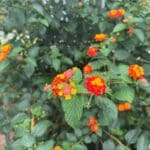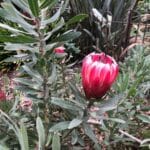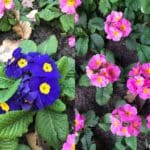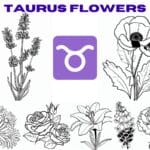Hyacinths are gorgeous spring flowers with distinctive sweet and lingering fragrance which has been admired by royal families throughout the ages and thus, have become a must for palace gardens and mansion parks.
Nowadays, hyacinths are everywhere – from parks to home gardens and indoor pots. Their distinctive scent cannot be mistaken and adds to the beautiful floral blossoming which is mainly in the spring. In the past extracts of hyacinths have also been used in perfumery and cosmetics.
Facts about Hyacinth
The name of the plant originally comes from Hyacinthus which is a Thraco-Pelasgian word for the deep blue colour of the water/sea (4).
Despite having its origins in Asia Minor, the legend of the flower sends us back in time through Greek mythology where the young Greek hero Hyakinthos is accidentally hit by a disk thrown by his friend Apollo and is reborn in the form of Hyacinth flower (5).
Another Greek myth referring to hyacinth states that the daughter of Demeter – the Goddess of fertility – has been abducted to the underworld while collecting hyacinths and her mother negotiated with the gods to have her turned back every year for one season (5).
This is why it is also believed that the blossom of hyacinths in the spring is the beginning of earth blooming season. Hyacinths are very often confused with the genus Muscari which is also known as grape hyacinths but these are different flowers and should be differentiated.
Chipmunks, squirrels, and voles have been known to dig up and eat hyacinth bulbs. Installing a cylinder-shaped physical barrier around the bulbs and extending it to the soil line while planting is the most effective method of protection.
How Tall Do Hyacinths Grow?
The height of the hyacinth stem is up to 15 inches and is covered with 1-inch-wide florets each of which is open-lily-shaped (2).
Color ranges from white through pink and dark claret to dark blue, deep purple, yellow and orange (3).
Blooming time
Hyacinths bloom in early to mid-spring, depending on the climate and growing conditions. In temperate regions, they often emerge in March or April, adding vibrant colors and sweet fragrances to gardens and landscapes.
The blooming period lasts for several weeks, delighting observers with their beauty and scent.
Growing Hyacinths in the Garden
Planting
Hyacinths are growing from bulbs and each of them is usually producing two or three stems with blossoms (1).
These delicate cobalt blue flowers are perfect for growing in a garden as they can survive severe winter conditions and enjoy exposure to lower temperatures in order to blossom properly.
To blossom in March or April, the planting of the bulbs needs to be completed in September or October, depending on the specific geographic region they are grown in.
Despite the variations, they definitely need to be planted before snowfall or freezing of the upper layer of the soil. This is important for healthy root development and creating stronger and bigger blossoms in the spring.
These spring blooming bulbs need to be planted on minimum 4 inches deep and a minimum of 3 inches distance from each other, so that the heavy flower stem is stable when it grows. Roots are developed soon after planting and after winter period, when the weather becomes warmer, they direct the stored energy into developing leaves and flowers.
Hyacinth plants are among the early bloomers, so a well-planned garden can blossom during the entire spring season (e.g. tulips blossom later). These hyacinth blooms are blossoming many years, as every next one the number of stems produced by one bulb increases but each of them is with less florets.
After-blossom Care
After hyacinths flower stop blooming, you have to cut the stems but provide the leaves with the opportunity to dry out naturally. This will make the plant stronger in the following years (6).
Warning: Hyacinth bulbs are poisonous and contain oxalic acid which can cause skin irritation and allergies. You can prevent accidents through using gloves when planting or re-planting the bulbs.
How to plant Hyacinths Indoor
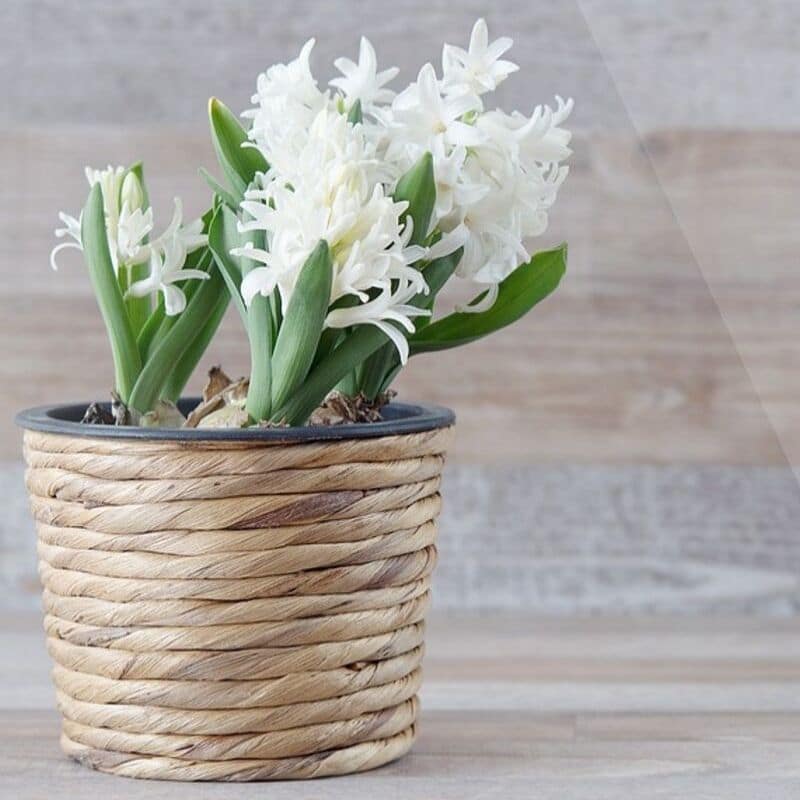
Hyacinths in pots
Hyacinths can also be grown as pot plants both indoor and outdoor. The best timing for planting the bulbs is immediately after buying them, but it can be postponed depending on the desired period of blossoming.
In order to force hyacinth bulbs, you have to keep the planted spring bulbs first in a cool and dark place ensuring they have their ‘cold period’ followed by sunlight and warmer temperatures, as explained in greater detail in the last section.
Hyacinths in vases
Hyacinths enjoy well-drained and moderately fertilised soil and can even be grown in a vase. Despite being an unconventional idea, placing a bulb roots in water can be a great addition to interior design of your home accompanied by strong aromatic scent.
If you decide to do that, however, you have to choose a vase with a proper shape, so that only the roots of the hyacinth bulb are in water.
Cut hyacinth flowers
If you have cut hyacinth flowers and you want to keep them in a vase, in order to prolong their life, you have to carefully clear the lower part of the stems and the leaves and keep them without touching the water.
Another trick to prolong blossom vase life is to cut the stems on an angle before they are placed in freshwater or flower food.
Hint: This can be done with other types of vase flowers too, it works!
A different idea: Hyacinth for Christmas
An extraordinary idea is to use hyacinths for Christmas decoration and design. For this purpose, plant hyacinth bulbs in pots in the first half of October and keep them in a dark place with a temperature in the range 6°C to 8°C. This would contribute to root network development (8).
Water regularly but only when the soil gets dry. When the leaves start growing and are approximately 1 inch long, move the pot to a light place with no direct sunlight and higher (but not drastically different) temperature (7). Remember that hyacinths thrive in partial shade, receiving filtered sunlight for a portion of the day.
During the next week increase the light and temperature gradually and include some sunlight. When watering, be careful to not put water inside the bulb as this might lead to rotten. After all this, just enjoy the pretty hyacinth flowers as a part of your Christmas decoration, accompanied by a strong spring aromatic scent!
FAQs
What do you do with a hyacinth after it blooms?
After a hyacinth blooms, you can either discard the bulb or plant it outdoors in a garden if you live in a suitable climate. If you plant it outside, allow the foliage to die back naturally to help replenish the bulb for the next growing season.
Will potted hyacinths rebloom?
Yes, potted hyacinths can rebloom if given proper care. After the flowers fade, continue to water the plant and allow the foliage to die back naturally. You can then store the bulb in a cool, dark place for several months before replanting it the following fall for indoor or outdoor growth.
How long do hyacinths last indoors?
Hyacinths can last indoors for around 2-3 weeks, depending on growing conditions and care. Providing bright, indirect sunlight and consistent watering can help prolong the blooming period.
Do hyacinth flowers multiply?
Yes, Hyacinth flowers can multiply over time through offsets or bulb division. As the plant matures, it may produce small bulbils or offsets around the original bulb. These can be carefully separated and replanted to propagate new hyacinth plants.
Final thoughts
In conclusion, mastering hyacinth care brings the joy of vibrant blooms and sweet fragrances to gardens and indoor spaces alike.
Whether grown in garden beds, containers, or indoor pots, hyacinths reward care and attention with stunning displays of color and delightful scents, enriching our lives with the beauty of nature.
With the knowledge and guidance provided in this article, you’re well-equipped to cultivate flourishing hyacinths and enjoy their beauty year after year.
Up Next: What Does the Hyacinth Flower Symbolize?
References
(1) Addai, I. (2010) Growth and Biochemistry of the Common Hyacinth (Hyacinthus Orientalis L.) and the Lily (Lilium Loniflorum L.). [online] Available: https://www.researchgate.net/publication/277210001_Growth_and_biochemistry_of_the_common_hyacinth_Hyacinthus_orientalis_L_and_the_lily_Lilium_longiflorum_L
(2) Beutler, L. (2007) Garden To Vase: Growing And Using Your Own Cut Flowers. Timber Press, Inc. Portland, USA.
(3) Brunke, E., Hammerschmidt, F., Schmaus, G. (1994) Headspace Analysis of Hyacinth Flowers. Flavour and Fragrance Journal. Vol. 9 (1), pp. 59-69.
(4) Gledhill, D. (2002) The Names of Plants. 3rd ed. Cambridge University Press. Cambridge, UK.
(5) Mann, M. (2012) The Epileptic Seizure and the Myth of Hyakinthos. Seizure. Vol. 21 (1), pp. 595-596. https://www.ncbi.nlm.nih.gov/pubmed/22766110
(6) RHS (2012) Hyacinth – Final Trials Report. [online] Available: https://apps.rhs.org.uk/planttrials/TrialReports/Hyacinth%202012.pdf
(7) Vreeburg, P. (1992) Preparation Treatment of Hyacinths for Flowering Before Christmas. Acta Horticulturae. Vol. 325 (1), pp. 165-173.
(8) Graine, G. (2014) Fooling Mother Nature: Forcing Flower Bulbs for Indoor Bloom. [online] Available: https://www.pubs.ext.vt.edu/content/dam/pubs_ext_vt_edu/HORT/HORT-76/HORT-76-PDF.pdf
Close

